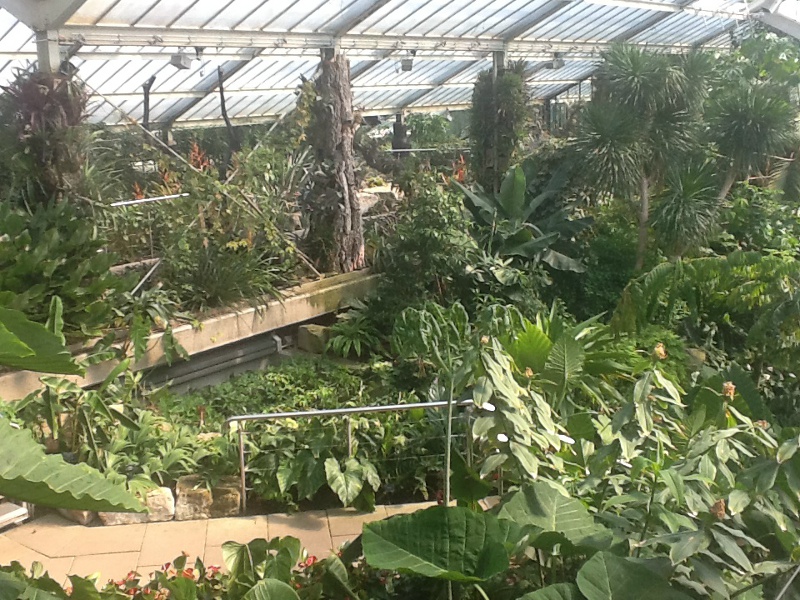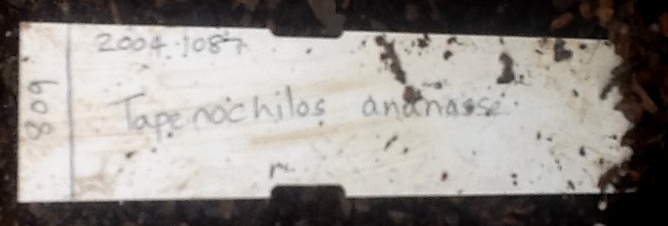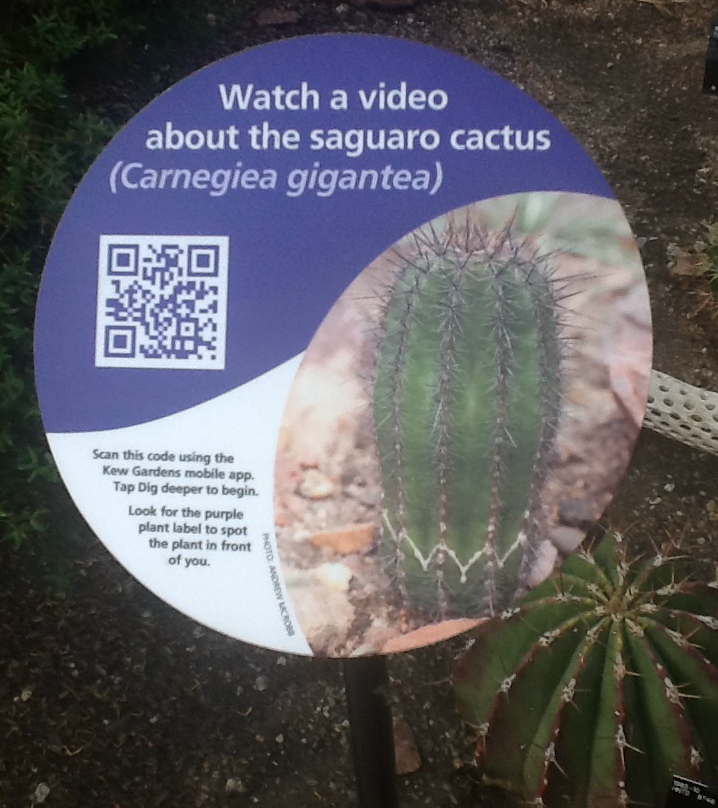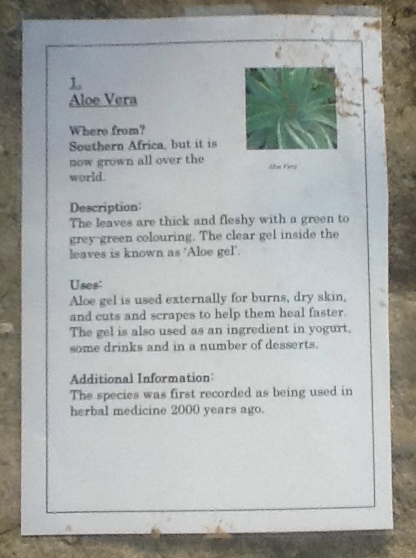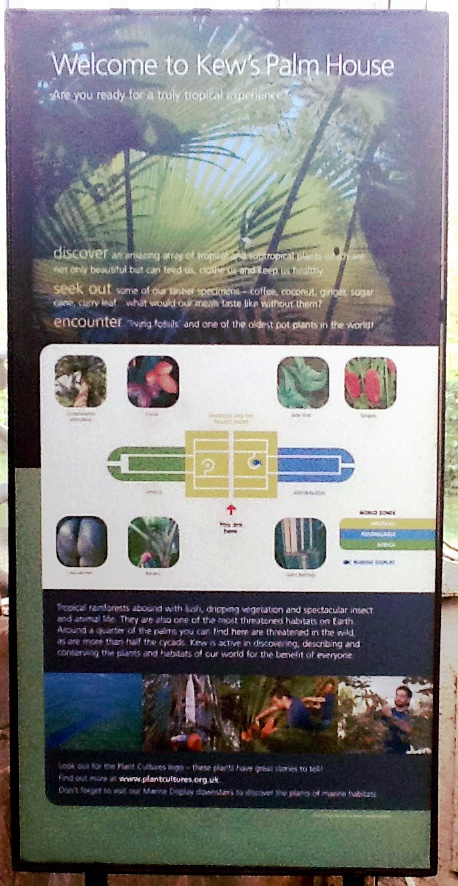While attending a review of the uses of the GBIF at Kew today I took the opportunity to check out the labelling system in use in their glasshouses before heading home. Kew gardens is England’s major botanic garden with unrivalled collections of plants from around the world.
The tender plants are housed in a range of both modern and traditional glasshouses of which the Waterlily Hose is one of the smallest. It contrasts with the extensive Princess of Wales Conservatory (Modern) and the Palm Hose (Traditional).
I checked the labelling in these three glasshouses and on the Alpine rockery. What surprised me was the huge range of different designs and styles of label. As with all the collections I’ve seen the most basic label type is the flimsy white handwritten label.
There are engraved labels in a similar shape that have been used to label a collection of small succulent plants that rather looks like a mini graveyard! Informative but rather visually invasive.
Another familiar was the engraved black label with white writing but some of these also had a QR code engraved on them linking to the accession code.
QR codes are also found on some of the interpretive labels such as this one for the Saguaro cactus which links to a video.
This round label is not the only deviation from the standard rectangle, there are also labels shaped like aroid leaves with interpretive signage.
In contrast with these rather sophisticated signs there are also laminated print-outs used in some places.
As well as plant labels there are area labels to let yu know which climatic zone you are vsiting including door signs and wall signs.
In the Palm House these label types are augmented by engraved slate labels stating which area of the world is represented in the planted bed. In the photo below you can see the engraved Australasia sign plus a range of other labelling all in close proximity.
As well as this selection there are Marianne North Trail signs in yet another style.
The Palm House also has a welcome sign with a map of the planting system. The rather fuzzy nature of this image shows how humid it was in there.
This is perhaps the greatest variety of different signage I’ve seen in one collection. It gives rather a heterogeneous impression but certainly does not lack variety!


